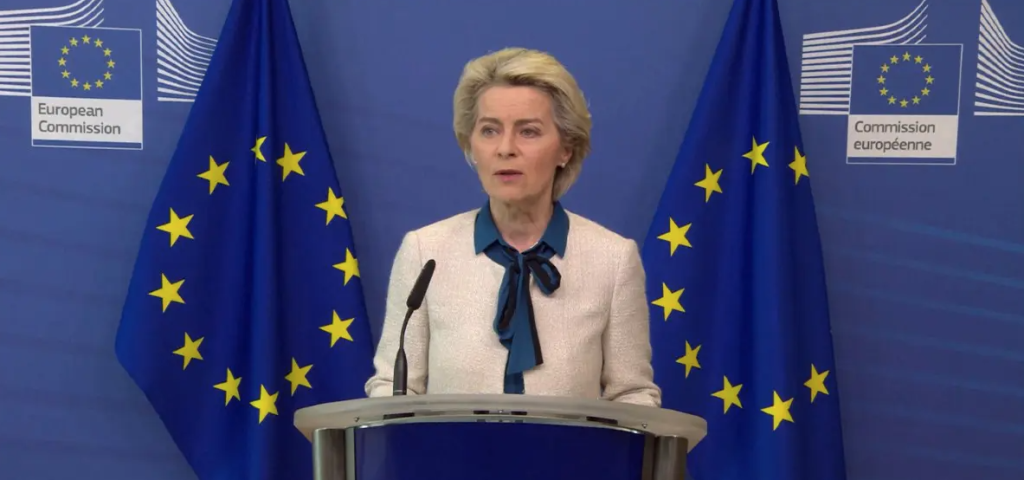The draft EU Repower plan was presented on 8 March
(Sustainabilityenvironment.com) – The REpower EU Plan, with which the EU tries to say goodbye to fossil fuels imported from Russia in five years, is worth 300 billion euros. 225 in funding and subsidies, 75 billion in loans.
In three moves plus one. Change suppliers for gas (and equip the necessary infrastructure), faster growth of renewables with a 5-point target raised to 45% by 2030, more commitment to energy savings and energy efficiency. To which is added a new solar strategy.
These are the key measures in the plan by which the European Commission responds to the Russian invasion of Ukraine and tries to use the crisis to accelerate the energy transition. Take steps to avoid a blow to the economy if Moscow suddenly decides to shut down the taps.
Presented in its main lines on 8 March, the final Repower EU Plan consists of a range of measures – including new legislative initiatives, Non-binding schemes and recommendations of the European executive to member countries – which aim to bring to zero energy dependence on Russia by 2027, already cutting by 2/3 gas imports from Moscow by the end of this year.
Of the total investments planned – 210 billion euros are new, in addition to those of the Fit for 55 – “95% will finance the European energy transition“, assures the President of the Commission Ursula von der Leyen in a press conference, trying to nip in the bud the controversies about the money that will end up in new gas infrastructure.
More energy savings
Increasing energy Savings and reducing energy demand are the measures that can contribute most to enhancing Europe’s energy security. The most important long-term measure taken by the EU is the increase of energy efficiency targets from 9% to 13% with an amendment to the EED Directive – still under discussion – under the Fit for 55 packages. Amendments to the EPBD Directive on the energy efficiency of buildings (also under discussion) and the legislative initiative on ecodesign and energy labeling will also contribute to the new objectives.
In the short term, however, the planned cuts in demand come in the form of a Commission communication: they are indications of behavior for industry and families and should cut 5% of Europe’s dependence on Russian gas and oil. The tips range from keeping the heaters lower to lowering the temperature of the boilers up to 60 ºC, from reducing the speed limits on the highway to support for micro-mobility and green mobility.
In addition, the Commission undertakes to prepare a legislative initiative to increase the share of zero-emission vehicles in fleets of public and corporate vehicles of a certain size, and to present a package of laws to make commercial transport more sustainable.
Diversify away from Russia
The key vehicle for diversifying supply will be the EU Energy Platform about gas. It is a voluntary mechanism to pool demand, coordinate the use of import, storage and transport infrastructure and negotiate with international partners to facilitate joint purchases of gas, LNG and hydrogen. Soon this platform will be flanked by a mechanism to facilitate joint purchases of gas. All this is to avoid internal competition that would slow down the process of diversification.
Between the investments key on the new infrastructures remembered in the plan REpower EU – for a total of 10 billion euros – comes evidenced the potenziamento of the Corridor South until 20 bcm, probably through the doubling of the TAP. A further 1.5-2 billion are planned for necessary adjustments in countries dependent on pipeline Russian oil imports. These are mainly refineries to be calibrated on new qualities of crude oil: it is the node that is blocking the sanctions on oil to Russia due to the opposition of Hungary.
Repower EU plan accelerates renewables
A large number of measures of the EU Repower plan directly concern the development of renewable energy. With the new EU Solar Strategy, the Union aims to exploit the very high potential of photovoltaic roofs – for some estimates, up to 25% of European demand – by introducing an installation obligation. Not for everyone: by 2026 all-new commercial and public buildings with a useful area of more than 250 m2 will be subject, while the following year the obligation will also apply to existing buildings. All new residential buildings will have to have solar roofs from 2029. The EU Solar Rooftops Initiative is expected to add 19 TWh of energy by 1 year and 58 TWh by 2025 (double the Fit for 55).
Overall, the solar strategy will double European photovoltaic capacity by 2025 and install 600 new GW by the end of the decade. With a recommendation, the Commission is cutting the time for authorizations, which is a key element in order to get the whole plan off the ground and make it credible. Most plants will have to receive the ok within 1 year, against the current average of 6-9 years. Each country must indicate areas or areas for which permitting has an accelerated process. Equally crucial is an amendment to RED II stating that installing new renewable capacity is “a prevailing public interest“.
And more: doubled the 2030 targets for domestic production of hydrogen, indications on how to promote PPA contracts and facilitate the participation of prosumer citizens through the spread of renewable energy communities. Finally, the Commission publishes a plan to increase the production of biomethane up to 35 bcm by 2030, including through the CAP.

